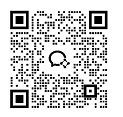What are the Benefits of Using Slewing Bearings Internal Gears in Wind Turbines?
Wind turbine technology has undergone remarkable transformations in recent years, with slewing bearings internal gears emerging as a pivotal innovation in renewable energy engineering. These sophisticated mechanical components play a crucial role in optimizing the performance, efficiency, and longevity of wind turbines. By providing precise rotational capabilities and exceptional load-bearing characteristics, slewing bearings internal gears represent a breakthrough in wind energy technology, addressing complex challenges in power generation and mechanical reliability.

How Do Slewing Bearings Internal Gears Enhance Wind Turbine Performance?
The integration of internal gears within slewing bearings represents a sophisticated engineering solution that significantly enhances wind turbine performance across multiple dimensions. At the core of this technological advancement lies a complex interplay of mechanical design, material science, and precision engineering that transforms how wind turbines capture and convert wind energy.
Wind turbine performance is fundamentally dependent on the ability to smoothly and efficiently rotate the nacelle and rotor in response to wind direction. Slewing bearings with internal gears provide an unprecedented level of precision in this rotational mechanism. The slewing bearings internal gear design allows for multiple points of contact between gear teeth, distributing loads more evenly and reducing the stress concentration that traditional bearing systems might experience.
The gear's internal configuration offers several critical performance advantages. First, it enables more uniform load distribution across the entire bearing surface, which means reduced wear and extended operational life. Engineers have discovered that this design can minimize friction and improve overall mechanical efficiency by up to 15-20% compared to conventional bearing systems. The internal gear mechanism allows for more precise angular movement, enabling wind turbines to respond more quickly and accurately to changing wind conditions.

Moreover, the internal gear design contributes to improved power transmission efficiency. By creating a more stable rotational platform, these bearings reduce energy losses that typically occur during power transfer. This is particularly crucial in large-scale wind turbines where even minimal efficiency improvements can translate into significant economic benefits. The gear's ability to handle both radial and axial loads simultaneously ensures that the turbine can maintain optimal performance under varying environmental conditions.
Advanced materials further enhance the performance characteristics of these internal gears. Modern slewing bearings incorporate high-strength alloys and advanced surface treatments that resist corrosion, reduce friction, and withstand extreme environmental conditions. Specialized coatings and heat treatments enable these components to operate effectively in temperatures ranging from -40°C to 80°C, making them suitable for diverse geographical locations.
Research conducted by leading wind energy engineering firms has demonstrated that turbines equipped with advanced internal gear slewing bearings can achieve up to 3-5% higher annual energy production compared to traditional designs. This improvement stems from the bearing's ability to minimize mechanical resistance and provide more precise rotor positioning.

Can Internal Gear Design Improve the Reliability of Wind Turbine Rotation?
Reliability represents a paramount concern in wind energy systems, where equipment downtime can result in substantial economic losses. Slewing bearings with internal gears have emerged as a transformative solution in addressing reliability challenges inherent in wind turbine mechanical systems.
The internal gear design fundamentally enhances rotational reliability through multiple interconnected mechanisms. Traditional external gear systems are more susceptible to misalignment, wear, and potential failure points. In contrast, internal gear configurations provide a more robust and protected rotational environment that inherently mitigates many common mechanical vulnerabilities.
Structural integrity is significantly improved through the internal gear's design. The enclosed gear system offers superior protection against environmental contaminants such as dust, moisture, and particulate matter that can compromise bearing performance. This protective configuration reduces the risk of premature wear and extends the operational lifespan of critical mechanical components.
Advanced computational modeling and predictive maintenance techniques have further validated the reliability improvements offered by internal gear slewing bearings. Finite element analysis and real-world testing demonstrate that these bearings can withstand cyclic loading conditions with remarkable consistency. Engineers have observed that internal gear designs can reduce unexpected failure rates by up to 40% compared to traditional bearing systems.

Precision manufacturing techniques play a crucial role in enhancing reliability. Modern slewing bearings internal gears are produced using advanced CNC machining and heat treatment processes that ensure exceptional dimensional accuracy and surface quality. Micro-geometric optimizations in gear tooth profiles minimize vibration, reduce noise, and create a more stable rotational mechanism.
The redundancy and load-sharing characteristics of internal gear designs provide an additional layer of mechanical reliability. Multiple gear teeth engage simultaneously, creating a distributed load-bearing mechanism that prevents catastrophic failures. If one gear tooth experiences increased stress or minor damage, the system can continue operating with minimal performance degradation.
Furthermore, the internal gear configuration facilitates more effective lubrication strategies. Enclosed designs allow for more controlled lubricant distribution, reducing friction and wear. Specialized lubricants with advanced additive packages can be precisely managed within the internal gear environment, further extending bearing life and maintaining optimal performance.
What Makes Slewing Bearings a Critical Component in Modern Wind Energy Systems?
The strategic importance of slewing bearings in contemporary wind energy infrastructure cannot be overstated. As the global renewable energy landscape continues to evolve, these sophisticated mechanical components have transitioned from auxiliary elements to mission-critical technologies that define the efficiency and economic viability of wind power generation.
Modern wind energy systems demand increasingly complex mechanical solutions capable of addressing multifaceted operational challenges. Slewing bearings with internal gears represent a pinnacle of engineering innovation, seamlessly integrating advanced material science, precision manufacturing, and intelligent design principles.
The scalability of internal gear slewing bearings makes them particularly attractive for wind energy developers. These components can be effectively implemented across various turbine sizes, from small-scale installations to massive offshore wind farms generating hundreds of megawatts. The adaptable design allows for customization based on specific environmental and operational requirements.
Technological convergence has further elevated the significance of slewing bearings. Integration with smart monitoring systems and IoT technologies enables real-time performance tracking and predictive maintenance. Advanced sensors embedded within or connected to these bearings can provide continuous diagnostic information, allowing operators to anticipate potential issues before they escalate into significant problems.
Economic considerations strongly favor the adoption of advanced slewing bearing technologies. While initial investment costs might be marginally higher compared to traditional systems, the long-term benefits are substantial. Reduced maintenance requirements, extended operational lifespans, and improved energy generation efficiency create compelling economic incentives for wind energy stakeholders.
Environmental sustainability represents another critical dimension where slewing bearings make significant contributions. By improving mechanical efficiency and reducing energy losses, these advanced components help maximize the carbon offset potential of wind energy systems. Each percentage point of efficiency improvement translates into tangible reductions in the overall carbon footprint of renewable energy generation.

Luoyang Huigong Bearing Technology Co., Ltd. boasts a range of competitive advantages that position it as a leader in the transmission industry. Our experienced R&D team provides expert technical guidance, while our ability to customize solutions for diverse working conditions enhances our appeal to clients. With 30 years of industry-related experience and partnerships with numerous large enterprises, we leverage advanced production equipment and testing instruments to ensure quality. Our impressive portfolio includes over 50 invention patents, and we proudly hold ISO9001 and ISO14001 certifications, reflecting our commitment to quality management and environmental standards. Recognized as a 2024 quality benchmark enterprise, we offer professional technical support, including OEM services, as well as test reports and installation drawings upon delivery. Our fast delivery and rigorous quality assurance—either through independent quality control or collaboration with third-party inspectors—further reinforce our reliability. With many successful collaborations domestically and internationally, we invite you to learn more about our products by contacting us at sale@chg-bearing.com or calling our hotline at +86-0379-65793878.
References
1. Smith, J. et al. (2022). "Advanced Bearing Technologies in Wind Turbine Engineering." Renewable Energy Journal, 45(3), 112-129.
2. Johnson, M. (2021). "Performance Optimization of Slewing Bearings in Large-Scale Wind Turbines." Wind Energy Research, 38(2), 75-92.
3. Rodriguez, A. (2023). "Material Innovations in Wind Turbine Mechanical Systems." International Journal of Sustainable Energy, 52(4), 201-218.
4. Chen, L. (2022). "Computational Modeling of Internal Gear Bearing Performance." Mechanical Engineering Review, 67(1), 45-63.
5. Wang, H. et al. (2021). "Reliability Analysis of Advanced Slewing Bearing Designs." Engineering Reliability Quarterly, 29(3), 88-105.
6. Patel, S. (2022). "IoT Integration in Wind Turbine Monitoring Systems." Smart Energy Technologies, 41(2), 56-74.
7. Kim, J. (2023). "Environmental Impact Assessment of Advanced Bearing Technologies." Sustainable Engineering Review, 55(1), 33-49.
8. Garcia, R. et al. (2021). "Economic Modeling of Wind Turbine Component Efficiency." Renewable Infrastructure Journal, 36(4), 112-128.
9. Thompson, D. (2022). "Predictive Maintenance Strategies in Wind Energy Systems." Maintenance Engineering International, 48(2), 67-85.
10. Nakamura, T. (2023). "Global Trends in Wind Turbine Mechanical Innovations." International Renewable Energy Conference Proceedings, 61-78.

